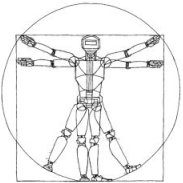Robotics: Science and Systems I
Square Root SAM
Frank DellaertAbstract: Solving the SLAM problem is one way to enable a robot to explore, map, and navigate in a previously unknown environment. We investigate smoothing approaches as a viable alternative to extended Kalman filter-based solutions to the problem. In particular, we look at approaches that factorize either the associated information matrix or the measurement matrix into square root form. Such techniques have several significant advantages over the EKF: they are faster yet exact, they can be used in either batch or incremental mode, are better equipped to deal with non-linear process and measurement models, and yield the entire robot trajectory, at lower cost. In addition, in an indirect but dramatic way, column ordering heuristics automatically exploit the locality inherent in the geographic nature of the SLAM problem. In this paper we present the theory underlying these methods, an interpretation of factorization in terms of the graphical model associated with the SLAM problem, and simulation results that underscore the potential of these methods for use in practice.
Bibtex:
@INPROCEEDINGS{ Dellaert-RSS-05,
AUTHOR = {Frank Dellaert},
TITLE = {Square Root {SAM}},
BOOKTITLE = {Proceedings of Robotics: Science and Systems},
YEAR = {2005},
ADDRESS = {Cambridge, USA},
MONTH = {June},
DOI = {10.15607/RSS.2005.I.024}
}
